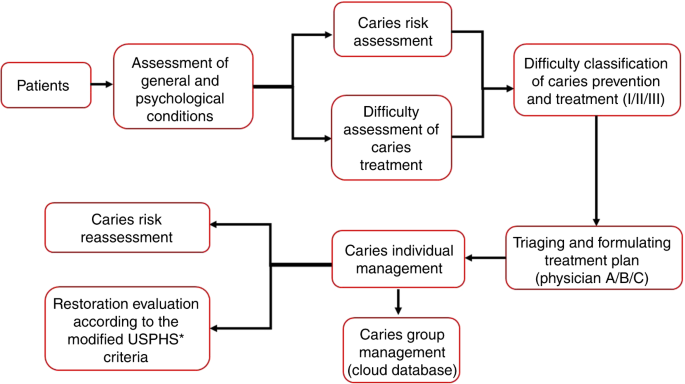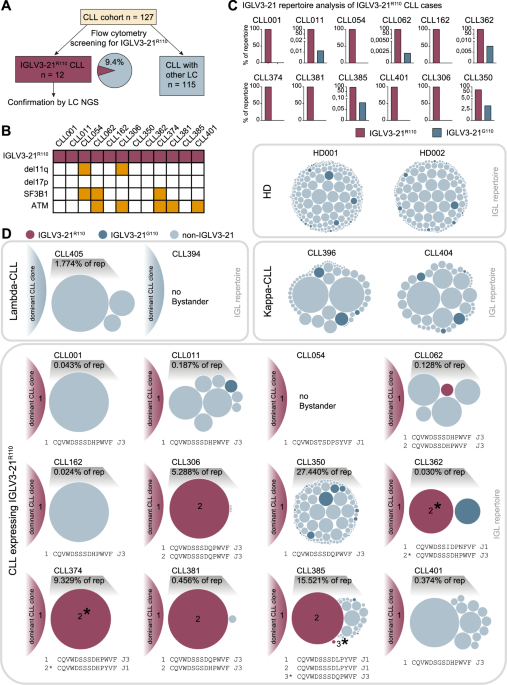|
Medicine by Alexandros G. Sfakianakis,Anapafseos 5 Agios Nikolaos 72100 Crete Greece,00302841026182,00306932607174,alsfakia@gmail.com,
Πληροφορίες
Ετικέτες
Πέμπτη 31 Μαρτίου 2022
At least 3 years of self-responsibility for periodontal care after 2 years of supportive periodontal therapy
Descriptive analysis of recurrences of nasal intestinal‐type adenocarcinomas after radiotherapy
|
Key Issues in Use of Prophylactic Steroids to Prevent Hypocalcemia and Voice Dysfunction After Thyroidectomy—Reply
|
Evaluation of digital construction, production and intraoral position accuracy of novel 3D CAD/CAM titanium retainers
|
Expert consensus on dental caries management
|
Τετάρτη 30 Μαρτίου 2022
Comparison of stress distribution between zirconia/alloy endocrown and CAD/CAM multi-piece zirconia post-crown: three-dimensional finite element analysis
|
The implicated clinical factors for outcomes in 304 patients with salivary duct carcinoma: Multi‐institutional retrospective analysis in Japan
|
From a Slave to a Surgeon: David Kearney McDonogh, the First Black Otolaryngologist
|
Subclonal heterogeneity sheds light on the transformation trajectory in IGLV3-21R110 chronic lymphocytic leukemia
|
Comparison of the Osteogenic Effectiveness of an Autogenous Demineralized Dentin Matrix and Bio-Oss® in Bone Augmentation: A Systematic Review and Meta-analysis
|
Advances in Surgical Treatment of Rhinitis
|
Key Points on Functional Rhinoplasty Patient Evaluation
|
Αρχειοθήκη ιστολογίου
-
►
2023
(276)
- ► Φεβρουαρίου (133)
- ► Ιανουαρίου (143)
-
▼
2022
(1976)
- ► Δεκεμβρίου (116)
- ► Σεπτεμβρίου (158)
-
▼
Μαρτίου
(186)
- At least 3 years of self-responsibility for period...
- Descriptive analysis of recurrences of nasal intes...
- Key Issues in Use of Prophylactic Steroids to Prev...
- Evaluation of digital construction, production and...
- Expert consensus on dental caries management
- Comparison of stress distribution between zirconia...
- The implicated clinical factors for outcomes in 30...
- From a Slave to a Surgeon: David Kearney McDonogh,...
- Subclonal heterogeneity sheds light on the transfo...
- Comparison of the Osteogenic Effectiveness of an A...
- Advances in Surgical Treatment of Rhinitis
- Key Points on Functional Rhinoplasty Patient Evalu...
- Anatomical variations in the relationship between ...
- Fibrin immobilization vestibular extension (FIVE):...
- The efficacy of Kinesio taping on lymphedema follo...
- Management of Benign Salivary Gland Conditions
- Natural history, predictive factors of apparent di...
- Design and Experimental Validation of a Master Man...
- Migration of a Fish Bone From the Esophagus to the...
- A comparison between sniffing and blowing for olfa...
- Acromegaly
- Giant Pituitary Adenoma – Special Considerations
- Cushing Disease
- Bladder Cancer Need Not Always Require Radical Cys...
- Improvement of performance and function in respira...
- The contralateral progression in a cohort of Chine...
- Stereotactic radiosurgery for the treatment of hyp...
- How I do it: management of M2 tear injury caused b...
- miRNA-guided reprogramming of glucose and glutamin...
- Perigraft seroma after total aortic arch replaceme...
- New ORL Abstracts
- Ganoderic acid A ameliorates non-alcoholic streato...
- Shp2 suppresses fat accumulation in white adipose ...
- Dural Entry Point of the Vertebral Artery: An Over...
- 3Effect of FFP2+3 masks on voice range profile mea...
- Variations in the anterior thoracic wall with ster...
- The efficacy of Kinesio taping on lymphedema follo...
- New ENT Abstracts
- Effects and influencing factors of vestibular reha...
- Analysis of whole-mouth taste function test result...
- Using the external auditory canal skin graft of th...
- Dynamic changes of vestibular autorotation test in...
- Human papillomavirus-related multiphenotypic sinon...
- Treatment, Outcome, and Relapse of Spontaneous and...
- The Auditory Processing Domains Questionnaire (APD...
- Giving Children with Deafness a Cape: Amplifying D...
- Preclinical study of Shen Qi Li Xin formula in imp...
- Liposarcoma subtype recurrence and survival: A UK ...
- Columellar strut grafts versus septal extension gr...
- H2O2 Concentration in Exhaled Breath Condensate In...
- The application of polyethylene glycol‐coated coll...
- miR-150-5p inhibits osteogenic differentiation of ...
- Anagliptin promotes apoptosis in mouse colon carci...
- Effectiveness of gabapentin in reducing opioid req...
- Radiologic–pathologic correlation of major versus ...
- Second primary malignancies induced by radioactive...
- Neue Therapieansätze für Speicheldrüsenmalignome
- Endoscopic dacryocystorhinostomy for refractory na...
- Pelvic Pain after italian coffee consumption : Isc...
- ROBOTIC REPAIR OF ATRIAL SEPTAL DEFECT WITH PARTIA...
- The effectiveness of topical 1% lidocaine with sys...
- Comparison of Video Head Impulse Test Findings in ...
- Bionic hearing in auditory neuropathy spectrum dis...
- Pinna injuries management at tertiary care center
- Otogenic Cerebral Venous Sinus Thrombosis: A Case ...
- Injection laryngoplasty during transoral laser mic...
- The effects of Cricothyroid Visor Maneuver (CVM) t...
- Feasibility of Mobile and Sensor Technology for Re...
- Common exacerbation-prone phenotypes across asthma...
- Immune system response to isometric handgrip exerc...
- Laboratory and imaging findings of necrotizing oti...
- Radiological score of computed tomography scans pr...
- Indications and outcomes for elective dissection o...
- Approach to gynecomastia and pseudogynecomastia su...
- Extensor indicis proprius transfer for the extenso...
- The Relationship Between Pitch Discrimination and ...
- BMI as a risk factor for the development of chroni...
- Molecular diagnosis and targeted treatment of adva...
- The effects of Cricothyroid Visor Maneuver (CVM) t...
- Stability of extemporaneously prepared sitagliptin...
- Radioguided surgery with iodine-125 seeds in breas...
- Deep brain stimulation of subthalamic nucleus modu...
- Nipple delay prior to nipple-sparing mastectomy: t...
- Mycobacterium avium and Mycobacterium intracellula...
- Sulopenem: An Intravenous and Oral Penem for the T...
- Propensity Score Analysis of Outcomes Following La...
- Pregnancy, Fetal, and Infant Outcomes Following Ma...
- Th17 cells and their related cytokines: vital play...
- CEBPβ regulation of endogenous IGF-1 in adult sens...
- Sugemalimab: First Approval
- Deep Learning Forecasts the Occurrence of Sleep Ap...
- Role of drug delivery technologies in the success ...
- Embedded Computational Heart Model for External Ve...
- Synthetic fused sRNA for the simultaneous repressi...
- Enhancement of radiation response of breast cancer...
- Thermophysics of pristine and functionalized carbo...
- Gastric duplication cyst: a challenging EUS differ...
- Real-time eye state recognition using dual convolu...
- Colocalization of Coronary Plaque with Wall Shear ...
- Laser‐Assisted Sialolithotripsy: A Correlation of ...
- ► Φεβρουαρίου (165)
- ► Ιανουαρίου (161)
-
►
2021
(3661)
- ► Δεκεμβρίου (161)
- ► Σεπτεμβρίου (274)
- ► Φεβρουαρίου (64)
- ► Ιανουαρίου (368)
-
►
2020
(4554)
- ► Δεκεμβρίου (400)
- ► Σεπτεμβρίου (381)
- ► Φεβρουαρίου (638)
- ► Ιανουαρίου (691)







